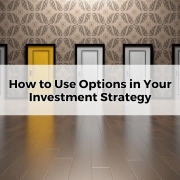What to do with an inheritance?
Table of Contents
ToggleReceiving an inheritance is more than just a financial windfall – it’s a moment that can shape your future and your family’s well-being.
In this blog post, we’ll help you navigate the path ahead, offering straightforward advice to make the most of this opportunity.
Assess your financial situation
Picture this: you’ve just received an inheritance, and it’s time to take a step back and look at the bigger picture. Assessing your financial situation is like using a map to find your way. Let’s break it down into simple steps.
Step 1: Take a snapshot of your finances
Start by gathering information about your current financial standing. List your assets – savings, investments, properties – and your liabilities – debts, mortgages, loans. This gives you a clear view of where you stand financially.
Step 2: Understand your goals
Think about what you want to achieve with this inheritance. Is it about securing your retirement? Buying a home? Funding your children’s education? Having specific goals will help you make informed decisions.
Step 3: Calculate your net worth
Calculating your net worth is like finding your starting point on the map. Subtract your liabilities from your assets to get a clear idea of your financial worth. This helps you understand the impact of inheritance on your overall wealth.
Step 4: Consider your current lifestyle
Reflect on your current spending habits and lifestyle. Are there any changes you’d like to make? Do you have any outstanding debts? Understanding your lifestyle and financial commitments helps you make decisions aligned with your priorities.
Assessing your financial situation is like setting the foundation for a strong building. It helps you understand where you are financially and where you want to go. This step ensures that your decisions are based on facts, not assumptions.
Set clear goals
Imagine your inheritance as a treasure chest full of possibilities. Now, picture yourself with a map in hand, marking the spots where you want to reach. That’s what setting clear financial goals is all about – creating a roadmap to your dreams.
Define your dreams
Start by dreaming big. What are your long-term aspirations? Is it early retirement, a dream vacation, or providing for your family’s future? Defining your dreams helps you focus on what truly matters to you.
Make your goals specific
Turning dreams into goals is like giving your map coordinates. Instead of saying “I want to travel,” say “I want to explore Europe within the next five years.” Specific goals help you measure progress.
Set timeframes
Goals without deadlines are like journeys without destinations. Assign a realistic timeframe to each goal. It creates a sense of urgency and helps you allocate resources efficiently.
Prioritise your goals
Your treasure map might have several destinations, but you can’t reach them all at once. Prioritise your goals based on importance and urgency. This way, you’ll know where to start.
Setting clear financial goals is like having a compass that points you in the right direction. It helps you make decisions that align with your dreams and values. When you know where you’re headed, you’re more likely to stay on course.
Create an emergency fund
Imagine your finances as a sturdy ship sailing through life’s unpredictable waters. An emergency fund is like a reliable lifeboat – it’s there to keep you afloat when unexpected storms hit. Let’s dive into why having an emergency fund is crucial and how to build one.
Why emergency funds matter
Life is full of surprises – some pleasant, others not so much. An emergency fund is your safety net during unexpected events like medical expenses, job loss, or urgent home repairs. It prevents you from dipping into your long-term investments or going into debt.
Determine the right amount
A good rule of thumb is to aim for three to six months’ worth of living expenses. Calculate your essential costs – housing, utilities, groceries – and multiply that by the number of months you want to cover. This provides a cushion for challenging times.
Start small, build gradually
Creating an emergency fund is like constructing a solid foundation. Start by setting aside a small portion of your inheritance and gradually build it over time. Consistency is key – even small contributions add up.
Keep it accessible
An emergency fund should be readily available when needed. Consider keeping it in a separate savings account, so you’re not tempted to dip into it for non-emergencies.
An emergency fund is like having a life jacket in rough waters. It provides peace of mind, knowing that you have a financial cushion to handle unexpected challenges without derailing your long-term plans.
Pay off high-interest debt
Imagine your finances as a garden. High-interest debt is like stubborn weeds that can choke your financial growth. Getting rid of these weeds is a priority, and we’re here to show you how.
Step 1: Identify high-interest debt
Start by identifying debts with the highest interest rates. Credit card balances and personal loans often fall into this category. These debts can cost you more over time, so tackling them first is like pulling out those aggressive weeds.
Step 2: Prioritise debt repayment
Paying off high-interest debt is like reclaiming fertile soil for your financial garden. Allocate extra funds from your inheritance towards these debts. Make more than the minimum payments to accelerate repayment.
Step 3: Snowball or avalanche method
Two popular approaches to tackling debt are the snowball and avalanche methods. The snowball method involves paying off smaller debts first, creating a sense of accomplishment. The avalanche method targets debts with the highest interest rates first, saving you more money in the long run.
Step 4: Stay committed
Paying off debt is like nurturing your garden – it takes time and effort. Stay committed to your repayment plan, and you’ll see progress over time.
Paying off high-interest debt is like removing obstacles from your financial path. It frees up money you can use for investing, saving, and achieving your goals faster. Plus, it reduces financial stress and improves your credit score.

Consult financial professionals
Think of your finances as a complex puzzle, and financial professionals are like expert puzzle solvers. When you receive an inheritance, seeking their guidance is like having a seasoned guide by your side. Let’s explore why consulting financial professionals is a smart move.
Expert advice tailored to you
Financial professionals have experience navigating various financial situations. Their guidance is like having a GPS for your financial journey, providing customised advice that aligns with your goals and circumstances.
Comprehensive analysis
Consulting financial experts is like getting a detailed map of your financial landscape. They analyse your inheritance, current finances, and future goals to offer a holistic view. This helps you make informed decisions.
Tax and legal considerations
Receiving an inheritance can have tax implications. Financial professionals can guide you through potential tax obligations and strategies to minimise tax liability, ensuring you maximise your inheritance.
Peace of mind
Making significant financial decisions can be overwhelming. Consulting experts is like having a mentor who can answer your questions and provide clarity, giving you peace of mind in your choices.
Consulting financial professionals is like having a co-pilot on your financial journey. Their expertise helps you avoid pitfalls, seize opportunities, and navigate complex financial landscapes.
Invest wisely
Imagine your inheritance as a seed that holds the potential for growth. Investing is like planting that seed in fertile soil and watching it flourish over time. Let’s delve into the world of investing and how to make informed choices.
Understand investment options
Investing is like choosing the right path for your seed. Explore different options – shares, bonds, real estate, mutual funds – and understand their risks and potential returns. Diversifying your investments is like planting multiple seeds for a robust portfolio.
Assess your risk tolerance
Investing is a journey that comes with risks. Assess your risk tolerance – your willingness and ability to handle fluctuations in value. Your risk tolerance helps you choose investments that align with your comfort level.
Long-term perspective
Investing is like tending to a growing plant. Think long-term – let your investments ride through market ups and downs. Historically, investments tend to grow over time, so patience is key.
Tax efficiency
Investing is also about maximising returns. Consider tax implications – investments may generate capital gains or dividends that are taxable. Opt for tax-efficient strategies to keep more of your gains.
Investing wisely is like nurturing a garden that yields bountiful harvests. It helps your inheritance grow over time, potentially outpacing inflation and securing your financial future.
Save for retirement
Imagine retirement as a beautiful sunset – a time to relax and enjoy the fruits of your labour. Saving for retirement is like ensuring you have a comfortable spot to watch that sunset. Let’s explore the importance of retirement planning and how to do it effectively.
Start early, benefit more
Retirement planning is like preparing for a long journey. The earlier you start, the more time your investments have to grow. Compounding – where your earnings generate more earnings – is your best friend here.
Explore retirement accounts
Retirement planning is like choosing the right vehicle for your journey. In Australia, Superannuation accounts offer tax advantages for retirement savings. Explore these accounts to maximise your benefits.
Determine your retirement needs
Retirement planning is like packing for a trip – you need to know what to bring. Estimate your retirement expenses – housing, healthcare, leisure – to determine how much you’ll need. This guides your savings goal.
Consistency is key
Retirement planning is like building a nest for your golden years. Contribute consistently to your retirement accounts. Automating contributions is like setting your savings on autopilot.
Saving for retirement is like ensuring you have a front-row seat to life’s best moments, even after your career. Planning ahead ensures financial security and peace of mind during your retirement years.

Fund education or career development
Imagine education and career development as paths that lead to personal growth and new opportunities. Using your inheritance to invest in these paths is like enriching your life with valuable experiences. Let’s dive into why funding education and career development is a smart choice.
Invest in yourself
Education and career development are like tools that empower you to reach new heights. Consider further education, professional certifications, or skill development courses. These investments can open doors to higher earning potential.
Evaluate return on investment
Using your inheritance for education is like planting seeds in a garden. Assess the potential return on investment – how will this education or skill development enhance your career prospects? Aim for choices that align with your goals.
Networking and learning
Education and career development are like keys that unlock knowledge and connections. Courses and workshops offer opportunities to network with like-minded individuals, potentially leading to collaborations and career growth.
Long-term benefits
Investing in education and career development is like building a strong foundation for your future. The skills you acquire can lead to increased job security, upward mobility, and personal fulfilment.
Funding education and career development is like enriching your toolbox with valuable resources. It’s an investment in yourself that can lead to higher income, job satisfaction, and personal growth.
Give to charity or loved ones
Imagine your inheritance as a source of positive change – a way to impact lives beyond your own. Giving to charity or loved ones is like spreading warmth and support to those you care about. Let’s delve into why charitable giving and supporting loved ones are meaningful choices.
Making a difference
Charitable giving is like extending a helping hand to those in need. Consider causes that resonate with you – education, healthcare, environmental conservation – and research reputable charities to ensure your donation is impactful.
Supporting loved ones
Sharing your inheritance with loved ones is like nurturing relationships. Whether it’s helping a family member achieve their dreams or contributing to a loved one’s well-being, your support can create lasting memories.
Tax benefits
Charitable giving and supporting loved ones can also have tax benefits. In Australia, certain donations are tax-deductible, and there are gifting rules for loved ones. Consult a financial professional to understand the tax implications.
Leaving a legacy
By giving to charity or loved ones, you’re leaving a positive legacy. Your generosity can inspire others and make a lasting impact on causes and individuals that matter to you.
Giving to charity or loved ones is like planting seeds of compassion and support. It enriches lives and leaves a legacy that extends far beyond financial assets.
Create a will and estate plan
Imagine your estate as a legacy you leave behind – a way to ensure your wishes are honoured and your loved ones are taken care of. Creating a will and estate plan is like crafting a roadmap for the distribution of your assets. Let’s explore why this step is essential and how to approach it.
Secure your legacy
Creating a will and estate plan is like leaving behind clear instructions. Your will outlines how you want your assets distributed, minimising confusion and potential conflicts among beneficiaries.
Appoint executors and guardians
Your will is also an opportunity to designate executors – individuals responsible for carrying out your wishes. If you have minor children, you can name guardians who will care for them if you’re no longer able to.
Consider estate taxes
Estate planning is like optimising the distribution of your assets. Depending on the value of your estate, there might be estate taxes to consider. Estate planning strategies can help minimise these taxes.
Review regularly
Creating a will and estate plan is not a one-time task. Life circumstances change, and your plan should reflect those changes. Review and update your will periodically to ensure it’s always current.
Creating a will and estate plan is like ensuring your voice is heard even after you’re gone. It provides peace of mind, knowing that your assets will be managed according to your wishes.

Your inheritance is a unique opportunity to shape your financial future, achieve your goals, and leave a lasting impact. Remember that each person’s situation is different, so it’s essential to tailor these steps to your specific needs and circumstances.









